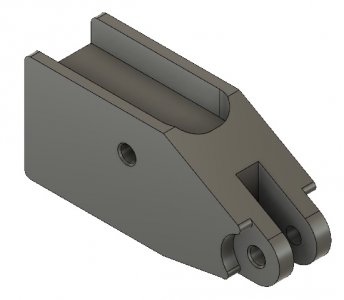If only I knew how to weld.  (need to learn.)
(need to learn.)
After jacking (pun intended) around with this POS the past two days, I believe that I will limit it's capacity to 400# and not use it for engines unless maybe on a riding mower. The PO used and abused it pretty well. (The forward casters are hosed also...)
Would love to take the time to do up something sweet, but I really need to get it operating.
I bought it with the thought of using it for chucks and vises, and now this month - surface plates.
The Air/Hydraulic cylinder is really nice.
Here's what I'm thinking:

 (need to learn.)
(need to learn.)After jacking (pun intended) around with this POS the past two days, I believe that I will limit it's capacity to 400# and not use it for engines unless maybe on a riding mower. The PO used and abused it pretty well. (The forward casters are hosed also...)
Would love to take the time to do up something sweet, but I really need to get it operating.
I bought it with the thought of using it for chucks and vises, and now this month - surface plates.
The Air/Hydraulic cylinder is really nice.
Here's what I'm thinking:



